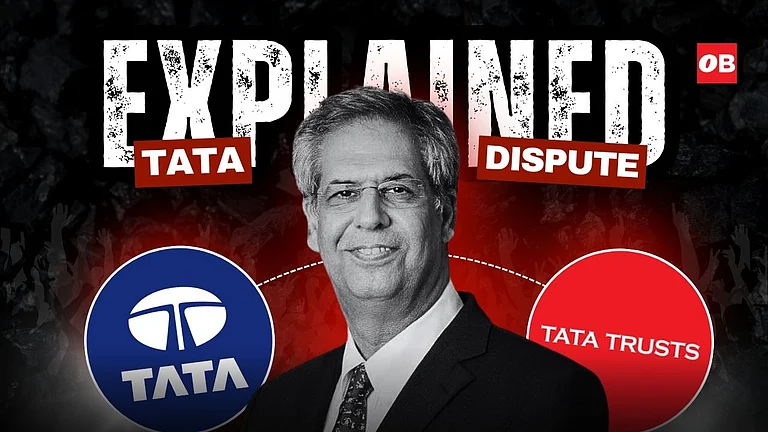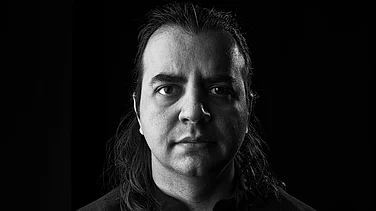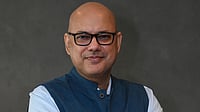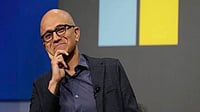Ratan Tata, chairman emeritus of Tata Sons, passed away on Wednesday, October 9. The news of the 86-year-old industrialist’s death was confirmed by N. Chandrasekaran, Chairman, Tata Sons.
In a media statement, Chandrasekaran said, “It is with a profound sense of loss that we bid farewell to Mr. Ratan Naval Tata, a truly uncommon leader whose immeasurable contributions have shaped not only the Tata Group but also the very fabric of our nation.”
Tata’s legacy is diverse, from wearing the hat of a prominent industrialist to that of a philanthropist and start-up investor. For Tata, it was more about group work and humility. As he said, “The best leaders are those most interested in surrounding themselves with assistants and associates smarter than they are.”
Tata’s association with Cyrus Mistry also started with friendship, rather family friendship. Mistry’s father, Pallonji Mistry, was the largest individual shareholder of Tata Sons’. Pallonji and Tata had a cordial relationship with the former backing Tata when he took charge of the conglomerate in 1991. The family relationship between the two goes way back to 1936, when the Mistry family bought 12.5 per cent stakes in Tata Sons. After the rights issue, the stakes increased to 18.5 per cent in 1996.
Mistry succeeded his father in 2006 as he joined the board of Tata Sons. At the age of 38, he became the youngest director of the company. Mistry soon climbed the ladders and was hailed as the successor of the company in 2011.
After Mistry was selected as the successor, Tata wrote, "The appointment of Mr. Cyrus P. Mistry as Deputy Chairman of Tata Sons is a good and farsighted choice.” Tata further highlighted that he was “impressed with the quality and caliber of his participation, his astute observations, and his humility.”
However, he also made sure that he was overlooking Mistry’s work. At the time of Mistry’s appointment, Tata highlighted that he would be committed to working with Mistry over the next year to give him the exposure, the involvement, and the operating experience. Further, he also made sure that after his retirement, he stayed in charge of Tata Trusts. This in turn allowed him to continue influencing major decisions in the group.
However, things turned downhill soon. On October 24, 2016, Mistry was removed. Following this, his predecessor Ratan Tata was named as the interim chairman of the company.
After his removal, a spokesperson of the company reportedly said, “Tata Sons, in its collective wisdom and on the recommendations of the principal shareholders, decided that it may be appropriate to consider a change for the long-term interest of Tata Sons and Tata Group.”
When Mistry was removed, analysts had reportedly indicated that he was struggling to improve the financial performance of Tata Group. One of the challenges included here was the company’s inability to sell its troubled steel business. In 2007, Tata Steel purchased the UK-based steelmaker Corus.
Mistry's Removal Sparks Controversy
What followed after this was allegation and counter allegations, messy court cases, and it went on and on. Soon the feud became a public feud, a famous corporate battle that has been widely discussed over and over again.
After his removal from the board, Mistry wrote a letter to the Tata Sons Board where he indicated, “I was shocked beyond words at the happenings at the board meeting of October 24, 2016. Apart from the invalidity and illegality of the business that was conducted, I have to say that the Board of Directors has not covered itself with glory.”
Mistry further mentioned that he was removed without being given any explanation and also without being given any opportunity to defend himself. He also emphasised that there was a total lack of corporate governance on behalf of the company. In his long, detailed letter, Mistry also indicated that there were differences between him and Ratan Tata. One of them was his decision to exit businesses like the Nano car project and from the telecom sector. The Nano product, Mistry highlighted, has always lost money, peaking at Rs. 1,000 crore. “Another challenge in shutting down Nano is that it would stop the supply of the Nano gliders to an entity that makes electric cars and in which Mr. Tata has a stake,” he wrote in the letter.
Even the telecom business, Mistry mentioned, has been bearing losses continuously. He said that exiting the business (via fire sale or shutdown) would cost $4–5 billion.
Another reason that might have led to his resignation was the handling of the NTT Docomo. As per reports, Tata was unhappy that Mistry took a tough stance on the NTT Docomo case and engaged in a legal battle regarding the same. NTT Docomo, a Japanese telecom service provider, was engaged in a dispute with Tata Sons over Docomo’s investment in Tata Teleservices.
Eventually, in 2016, the London Court of International Arbitration asked Tata to pay $1.17 billion in damages. As per Mistry, “The original structure of the DoCoMo transaction raises several questions about its appropriateness from a commercial or prudential perspective within the then prevailing Indian legal framework.”
The Final Straw: Welspun Energy Acquisition Sparks Controversy
Another reason that allegedly acted as the final pin in the coffin was the acquisition of renewable energy asset Welspun Energy by Tata Power in June 2016. Mistry reportedly presented the decision to the board as a done deal without seeking their input or approval, which in turn triggered the situation.
Meanwhile, Ratan Tata in 2016 highlighted that it was absolutely necessary to remove Mistry. He wrote to his employees that the decision to change the leadership of Tata Sons was a well-considered and serious one for its board members. “This difficult decision, made after careful and thoughtful deliberation, is one the board believes was absolutely necessary for the future success of the Tata Group,” he added.
The company also released a nine-page letter about Mistry’s removal where they highlighted, “Yet, after four years of full-time involvement and executive authority, we continue to be told how these ‘legacy’ problem areas are a major drag on Mr. Mistry’s otherwise good performance.”
The company further wrote, “Mr. Mistry has been consistently indicating that companies have performed well during his four-year term, but the figure quoted by him always refers to the total of the group companies, including TCS and JLR, which account for over 90 per cent of the group’s profits. Since he hardly contributed to the management of these two companies, it would be more important and relevant to look at the totals of the rest of the group, which will show that while there has been an increase in turnover.”
What followed after this was the prolonged legal battle that started in 2016 by Mistry. While the National Company Law Appellate Tribunal (NCLAT) ruled that Mistry’s removal was illegal in 2019, in 2021, the Supreme Court ruled in favor of Tata.
Mistry died in a car crash on September 5, 2022. Following his death, Prime Minister Narendra Modi wrote on X, “He was a promising business leader who believed in India’s economic prowess. His passing away is a big loss to the world of commerce and industry. Condolences to his family and friends.” However, what was interesting was the silence from Ratan Tata’s part.
Ratan Tata’s dispute with Mistry isn’t the only one. His legacy also comprises complex rivalries, including other disputes like the Tata Nano Singur controversy.































